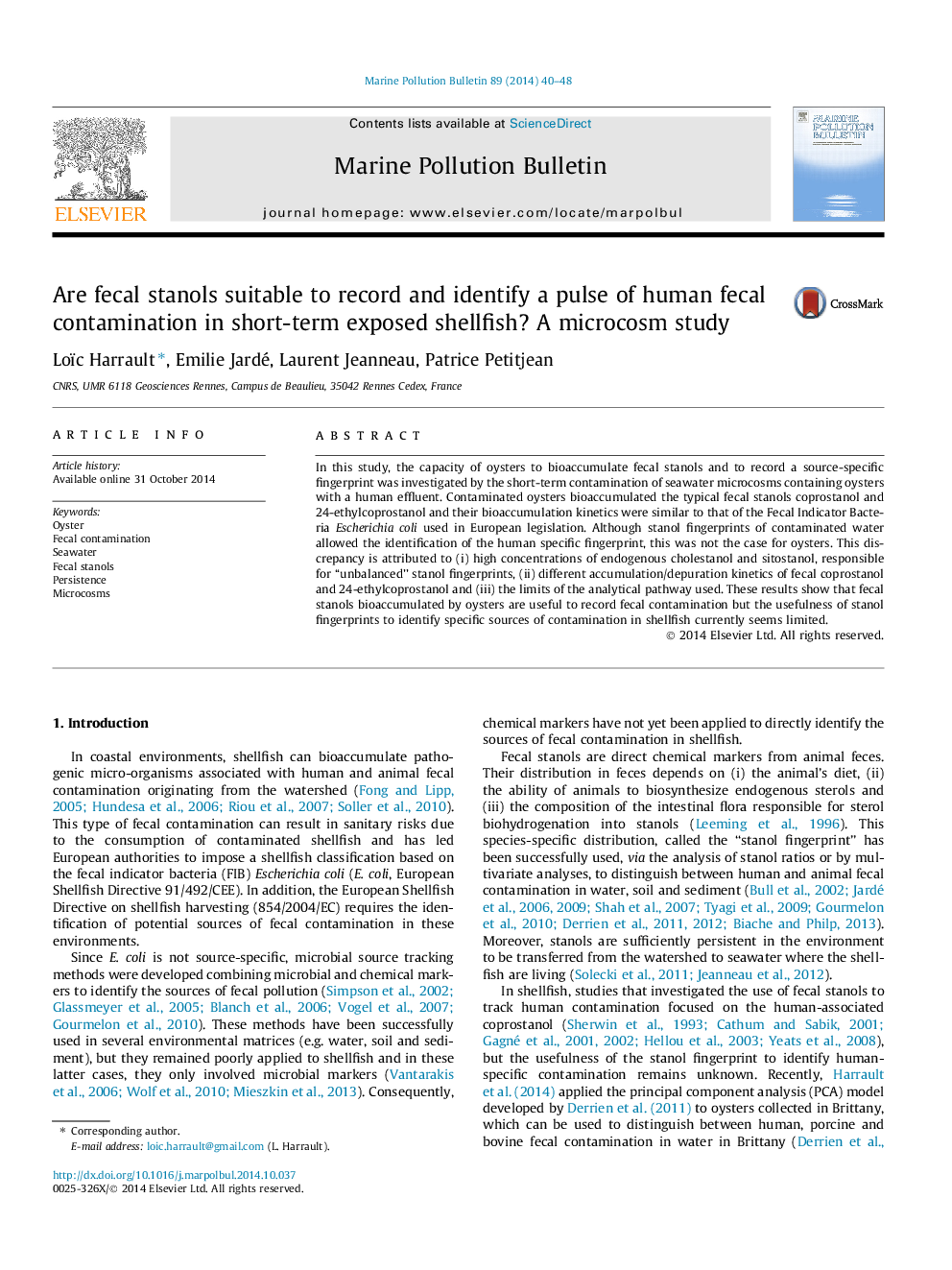| Article ID | Journal | Published Year | Pages | File Type |
|---|---|---|---|---|
| 6357867 | Marine Pollution Bulletin | 2014 | 9 Pages |
Abstract
In this study, the capacity of oysters to bioaccumulate fecal stanols and to record a source-specific fingerprint was investigated by the short-term contamination of seawater microcosms containing oysters with a human effluent. Contaminated oysters bioaccumulated the typical fecal stanols coprostanol and 24-ethylcoprostanol and their bioaccumulation kinetics were similar to that of the Fecal Indicator Bacteria Escherichia coli used in European legislation. Although stanol fingerprints of contaminated water allowed the identification of the human specific fingerprint, this was not the case for oysters. This discrepancy is attributed to (i) high concentrations of endogenous cholestanol and sitostanol, responsible for “unbalanced” stanol fingerprints, (ii) different accumulation/depuration kinetics of fecal coprostanol and 24-ethylcoprostanol and (iii) the limits of the analytical pathway used. These results show that fecal stanols bioaccumulated by oysters are useful to record fecal contamination but the usefulness of stanol fingerprints to identify specific sources of contamination in shellfish currently seems limited.
Related Topics
Physical Sciences and Engineering
Earth and Planetary Sciences
Oceanography
Authors
Loïc Harrault, Emilie Jardé, Laurent Jeanneau, Patrice Petitjean,
